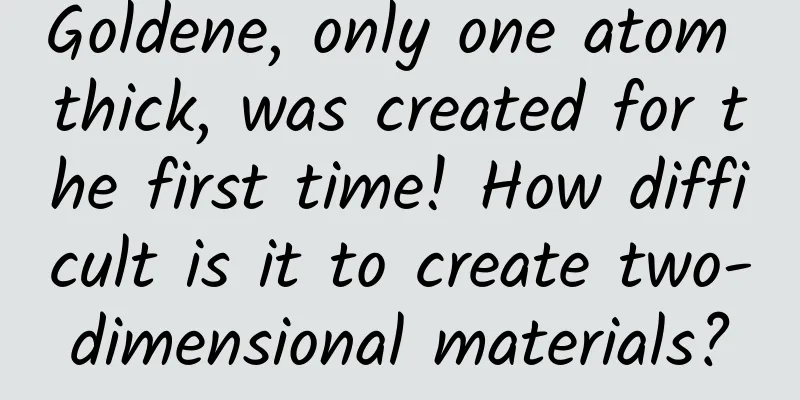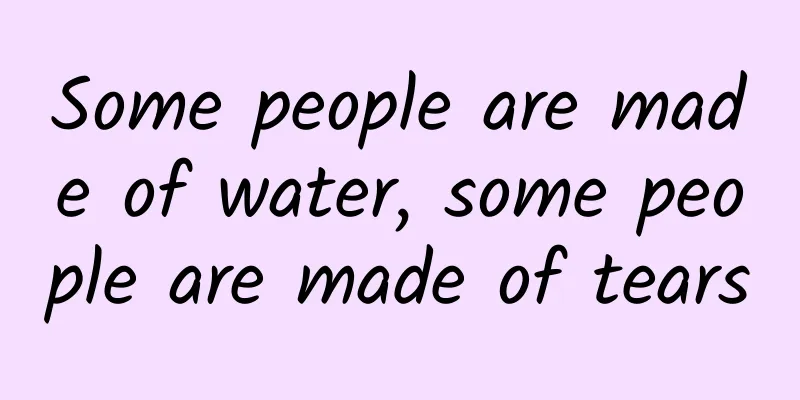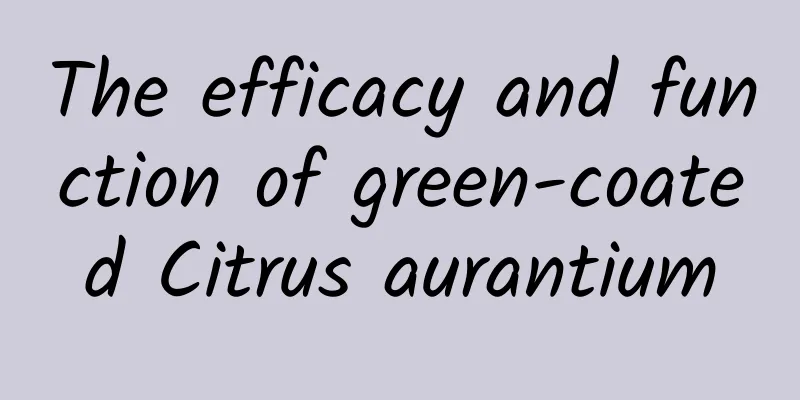Goldene, only one atom thick, was created for the first time! How difficult is it to create two-dimensional materials?

|
Author: Chen Jiajun I believe many people have heard of graphene, a two-dimensional material composed of carbon atoms and only one atom thick. Since its discovery in 2004, graphene has attracted widespread attention due to its unique properties. This has also inspired scientists to explore other two-dimensional materials. On April 16, 2024, a new study published in the journal Nature Synthesis announced that the two-dimensional material family has welcomed a heavyweight new member - goldenene. This is the first time that researchers have successfully created a two-dimensional gold sheet that is only one atomic layer thick. Why is it so difficult to create two-dimensional materials like goldene that are made only of metals? This is because metal atoms tend to aggregate into clumps, forming three-dimensional nanoparticles, rather than forming stable two-dimensional monoatomic layers. This property poses a great challenge to scientists, especially when experimenting on precious metals such as gold, where it becomes even more difficult to control the arrangement of its atoms. The research team started with a conductive ceramic material called titanium silicon carbide (Ti₃SiC₂). This material has good conductivity and a layered structure. It contains a layer of silicon sandwiched between titanium carbide sheets. When the researchers covered the surface of this material with a layer of gold and exposed it to high temperatures for heating, an unexpected phenomenon occurred: the silicon layer was replaced by gold atoms to form a completely new material** -** titanium gold carbide ( Ti₃ AuC ₂ ). This phenomenon is called intercalation. Figure: The silicon in titanium silicon carbide (Ti₃SiC₂) is replaced by gold to form titanium gold carbide (Ti₃AuC₂). Although researchers have tried to strip the gold layer from titanium carbide for several years, they have not been successful. By chance, the researchers noticed a method that has been used in the Japanese blacksmithing art for more than a hundred years. This method uses a chemical called Murakami's reagent, which can etch away residual carbon and change the color of steel during the knife manufacturing process. This inspired the researchers to use this reagent to etch the Ti₃C₂ layer in titanium carbide. In order to obtain the best effect, the researchers modified the formula of Murakami's reagent. They tried different concentrations of Murakami's reagent and etching times ranging from one day to several months. They noticed that the lower the concentration and the longer the etching process, the better the final effect. But there is another challenge: during the etching process, exposure to light produces cyanide, which dissolves the gold. Therefore, the entire process must be done in the dark to protect the gold layer. Once the gold flakes were separated, the researchers needed to solve the problem of how to maintain the stability of the two-dimensional gold flakes. In the experiment, the researchers observed that the two-dimensional gold flakes generated by etching were prone to curling and agglomeration. To solve this problem, they added a surfactant that can form a protective layer on the surface of goldene to prevent the flakes from sticking to each other, thereby keeping them flat and stable. Ultimately, the researchers demonstrated that they had successfully created a stable, single-atom-thick two-dimensional layer of gold called aureole. The discovery of goldene not only adds a heavyweight new member to the family of two-dimensional materials, but also opens up a new path for scientists to explore two-dimensional materials composed of precious metals. Compared with traditional gold nanoparticles, goldene is unique in that each gold atom has only 6 neighboring atoms, rather than 12 in three-dimensional crystals. This unique property makes researchers full of expectations for its future applications. Whether in carbon dioxide conversion, hydrogen production catalysis, or in water purification and advanced communication technology, this single-atom-thick gold sheet may become a core material for change. It is important to note that Murakami's reagent may introduce iron impurities during the etching process, which may affect the purity and catalytic performance of goldene. Therefore, researchers are working to optimize the synthesis process of goldene to improve its stability and production efficiency. In addition, how to maintain the high quality and consistency of goldene in large-scale production is also a difficult problem that needs to be overcome in future applications. From the initial graphene to today's goldene, the study of two-dimensional materials has shown us how to release unprecedented new properties by changing the atomic arrangement structure of the material. The successful preparation of goldene not only reveals a new material form, but also heralds the birth of more two-dimensional precious metal materials. As scientists continue to explore new preparation methods and application scenarios, goldene and its derived materials are expected to achieve breakthroughs in environmental protection technology, clean energy, precision medicine and other fields, pushing us towards a more sustainable and efficient future. Paper link: https://journals.aps.org/prl/abstract/10.1103/PhysRevLett.133.172502 This article is a work supported by Science Popularization China Starry Sky Project Author: Chen Jiajun Reviewer: Mu Yunsong, Director of the Department of Environmental Science and Engineering, College of Chemistry and Life Resources, Renmin University of China Produced by: China Association for Science and Technology Department of Science Popularization Producer: China Science and Technology Press Co., Ltd., Beijing Zhongke Xinghe Culture Media Co., Ltd. |
>>: The hotter the foot bath water, the better? The truth is——
Recommend
Effects of Danshen Hawthorn Panax Notoginseng Powder
In daily life, we find that many people are not v...
The efficacy and function of olive juice
There are many common Chinese medicinal materials...
The efficacy and function of Jingbianqian
The environment is now seriously deteriorating an...
The efficacy and function of myrrh
Although Western medicine and Western drugs are m...
The efficacy and function of Bletilla striata
I don’t know if you are familiar with Bletilla st...
Effects and functions of Pinellia ternata
Pinellia ternata is a very common Chinese medicin...
Save the "disappeared her" in your mind! Can protein modification help you "remember"?
◎Reporter Zhang Jiaxin Improving memory is an ete...
The efficacy and function of iron wire seven
The world is full of wonders, and Chinese medicin...
The stove ignited the quilt, 13 people were trapped! How to prevent safety when heating in winter?
Evening of December 27 A fire broke out in a resi...
The efficacy and function of the plant
Do you know about the Maiboshu? It is a common me...
The efficacy and function of hanging white leaves
The leaves of the Chinese dangbai are very nutrit...
Can Traditional Chinese Medicine cure thyroid nodules?
The treatment effect of thyroid nodules in Wester...
Sky-observing artifact | Big Ear Telescope: Detailed explanation of Wow! Signal 6EQUJ5, was it sent by aliens?
Author: Hatton (student of the Science Voice Know...
Is burdock really delicious?
Is burdock delicious? There are many ways to cook...









